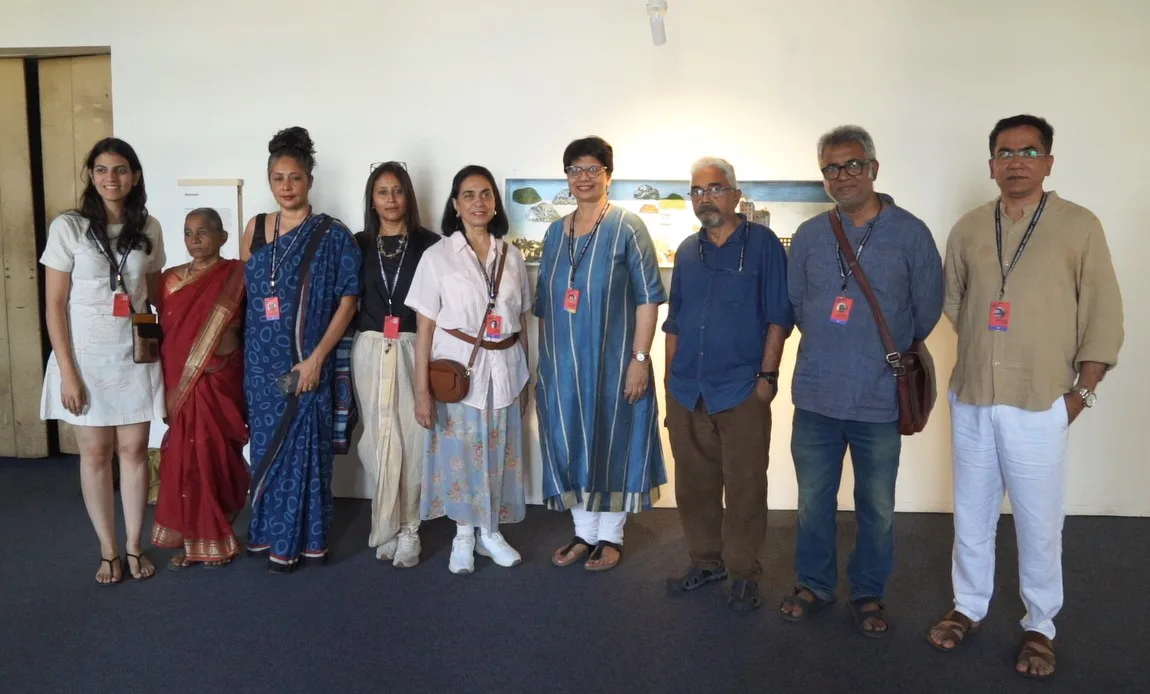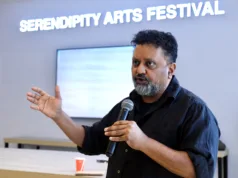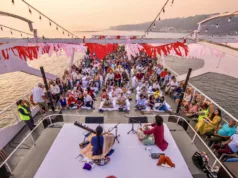Bicholim-based craftspeople, and other Goa-based and Indian artists share an international platform to showcase their craftsmanship at the Directorate of Accounts, Panaji, as part of a craft exhibition curated by Craft discipline co-curator Dr Kristine Michael for the Serendipity Arts Festival 2024.
The exhibition, titled ‘Past Forward: Remix and Collaborations in Ceramics and Glass’ at the Directorate of Accounts, Panaji, features works by renowned Goan artists like Shankar Turi of Turi Azulejos & Pottery and Zillu and Dattaram Harmalkar of Kumbhar Pottery in Bicholim, traditional bamboo and cane weaver Rukmani Pandurang Parwar from Corjuem, Goa-based ceramicist Nimmi Joshy, among others.

“Since 1999, I have been creating Azulejos in Goa. There is a lot of demand here, and also from outside the state. ‘Azul’ means both blue and smooth, and this is a 15th-century art practice” said artist Shankar Turi, who will be facilitating a ‘Hand-Painted Azulejos Tiles’ workshop as part of SAF 2024, at the Craft Workshop Room – Directorate of Accounts on December 20, at 11 AM.
This exhibition brings together contemporary and traditional artists from across India working with glass and ceramics to tell stories rooted in memory and lived experiences. Through upcycled materials and innovative techniques, these artists reimagine art and explore sustainable creativity.
“As the curator of ‘Past Forward: Remix and Collaborations in Ceramics and Glass’, what I wanted to show was Goa as a microcosm of India. That it is a mixture, it is a syncretic culture of all the different identities throughout history that have come and settled within this country, and has created that Goan identity,” said Dr Kristine Michael.
Ceramics, once considered a craft rather than fine art, has undergone a significant transformation in India, according to Kristine Michael, a New Delhi-based ceramic artist, researcher, curator and arts educator. She also said that the acceptance of ceramics as a recognised art form, including its inclusion in national exhibitions like the Lalit Kala Academy Triennale, has paved the way for ceramics to be embraced within the fine arts community.
Dr Kristine Michael’s journey into ceramics began unexpectedly.
Initially, she enrolled in one of India’s leading schools of design, the National Institute of Design, with a focus on textiles. However, upon first interacting with clay, she was captivated. “Ceramics as a medium grabbed me as soon as I touched my hands into the clay,” she recalls. This shift marked the beginning of her journey as a ceramicist, despite being the only student in her batch who chose ceramics. Over the past 25 years, the field has grown dramatically, with every art college now offering ceramics programmes, she said.
Dr Kristine also acknowledges the challenges ceramics faced in the art world. “When I first started, ceramics was considered craft, not fine art,” she says. It wasn’t until the late 80s that the Lalit Kala Academy officially accepted ceramics as an art form. Dr Kristine is optimistic about the progress the field has made, stating that galleries and international imports of ceramics equipment have radically transformed the art domain’s landscape.
Craft-based exhibits at SAF 2024:
Directorate of Accounts, December 15-22
– ‘Past Forward: Remix and Collaborations in Glass and Ceramics’
– ‘The Infinite Forest: An Exploration of Material Possibilities’
Samba Square, December 15-22
– ‘Abundance in Scarcity: Exploring Ladakh’s Sustainable Ingenuity’






